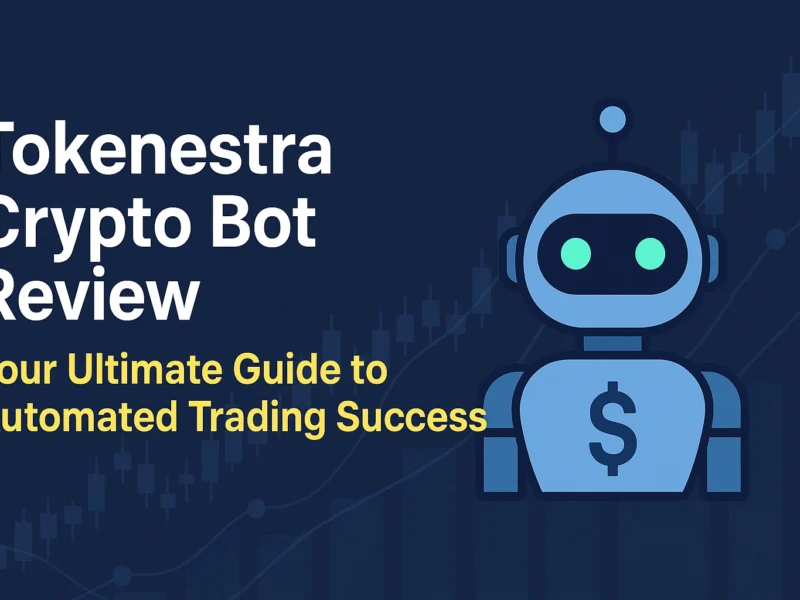Cryptocurrency markets operate 24/7, presenting endless opportunities and challenges for traders. In this fast-paced, highly volatile environment, crypto trading bots have become indispensable tools for automating trades and executing strategies with precision. By leveraging algorithms and pre-set rules, these bots can identify profitable trades, react faster than any human, and eliminate emotional decision-making.
But how do you craft effective strategies to ensure your bot doesn’t just trade but trades smartly? Understanding and implementing the right crypto trading bot strategies is the key to unlocking their true potential and maximizing returns.
How Do Crypto Trading Bots Work?
Crypto trading bots are software programs that interact with cryptocurrency exchanges through APIs (Application Programming Interfaces) to analyze market data, execute trades, and manage portfolios. At their core, these bots automate repetitive tasks based on predefined parameters, such as price movements, technical indicators, or specific market conditions.
The main components of a crypto trading bot include:
- Market Analysis Module: This evaluates data from exchanges and interprets key indicators like RSI (Relative Strength Index) or MACD (Moving Average Convergence Divergence).
- Trade Execution Module: This places buy or sell orders when conditions are met.
- Risk Management Module: This ensures that losses are minimized by setting stop-losses or take-profits.
By combining these components, bots simplify the complexities of trading and offer a streamlined approach to navigating the unpredictable crypto landscape.
Types of Crypto Trading Bots
The world of crypto trading bots is diverse, catering to different trading styles and objectives. Below are the primary types of bots:
Arbitrage Bots
These bots capitalize on price discrepancies between exchanges. For instance, if Bitcoin is priced at $30,000 on Exchange A and $30,200 on Exchange B, an arbitrage bot can buy from A and sell on B for a quick profit.
Market-Making Bots
Market-making bots place simultaneous buy and sell orders at slightly different prices to profit from the bid-ask spread. This strategy is especially popular in less volatile markets.
Trend-Following Bots
These bots identify market trends and execute trades aligned with the direction of the market. For example, if a bot detects an upward trend in Ethereum prices, it will buy and hold until signs of reversal appear.
Scalping Bots
Designed for high-frequency trading, scalping bots make small, quick profits on minor price changes, often trading hundreds or thousands of times daily.
Each bot type serves specific purposes, and the choice of bot largely depends on a trader’s goals and risk tolerance.
Advantages of Using Crypto Trading Bots
Crypto trading bots like Immediate MaxAir offer numerous advantages that can elevate your trading performance.
- Speed and Efficiency: Bots can execute trades in milliseconds, taking advantage of fleeting opportunities that humans might miss.
- Eliminating Emotional Trading: Fear and greed often cloud judgment in manual trading. Bots operate strictly based on logic and rules, ensuring decisions remain objective.
- 24/7 Market Monitoring: Unlike humans, bots never sleep. They continuously scan markets and react to changes even while you’re offline.
- Data-Driven Decisions: Bots rely on comprehensive market analysis, improving the likelihood of profitable trades.
These benefits make bots a powerful ally for both novice and experienced traders.
Limitations and Risks of Crypto Trading Bots
Despite their advantages, crypto trading bots are not without flaws. Understanding their limitations is crucial:
- Market Volatility Challenges: Bots operate based on historical data and pre-set rules, making them less effective during sudden, unpredictable price swings.
- Lack of Adaptability to News: Unlike humans, bots cannot interpret market-moving news, such as regulatory announcements or technological breakthroughs.
- Security Concerns: Bots require access to your exchange account via APIs. If improperly secured, they can become a vulnerability.
To mitigate these risks, traders must regularly update their strategies, monitor bot performance, and prioritize security.
Essential Strategies for Crypto Trading Bots
Crafting the right strategies ensures that your bot operates effectively in any market condition.
Trend-Based Strategies
These strategies involve analyzing price trends and instructing the bot to follow them. For example, if Bitcoin consistently breaks resistance levels, a trend-following bot will enter long positions.
Mean Reversion Strategies:
Here, bots trade based on the assumption that prices will revert to their average after extreme movements. If Ethereum’s price drops sharply, a mean reversion bot might buy, anticipating recovery.
Momentum-Based Strategies:
Momentum bots capitalize on strong price movements, entering trades during significant upward or downward trends and riding the momentum until it weakens.
These strategies form the foundation of a robust trading bot setup.
Arbitrage Strategies Explained
Arbitrage is one of the simplest and most profitable strategies for crypto trading bots. It involves exploiting price differences between exchanges or markets. For instance, if Litecoin is priced at $100 on Binance and $102 on Coinbase, a bot can execute the following:
- Buy Litecoin on Binance for $100.
- Simultaneously sell Litecoin on Coinbase for $102.
Even after transaction fees, the profit margin remains attractive. Arbitrage bots are particularly effective during periods of market inefficiency or high volatility.
Scalping Strategies with Bots
Scalping bots thrive in liquid markets where small price movements occur frequently. By placing hundreds of trades in a day, these bots aim to accumulate small profits that add up over time.
However, managing transaction fees is critical. Traders must choose exchanges with low fees or implement strategies that minimize costs, ensuring the bot remains profitable.
Grid Trading Bot Strategies
Grid trading is a popular approach that involves placing buy and sell orders at fixed intervals above and below a base price. This strategy is ideal for markets with frequent fluctuations.
For example, if Bitcoin is trading around $30,000, a grid bot might:
- Place buy orders at $29,800, $29,600, and $29,400.
- Place sell orders at $30,200, $30,400, and $30,600.
As the market oscillates, the bot profits from these small price movements.
FAQs on Crypto Trading Bot Strategies
What is the best crypto trading bot strategy for beginners?
Dollar-Cost Averaging (DCA) is a simple and effective strategy for beginners. It involves buying small amounts of cryptocurrency at regular intervals, reducing the impact of market volatility.
How do I ensure my trading bot is secure?
Use trusted bot platforms, enable two-factor authentication (2FA) on your accounts, and limit API permissions to trading-only access.
Are crypto trading bots legal?
Yes, crypto trading bots are legal in most countries, provided they operate within the exchange’s terms and local regulations.
Do I need coding skills to use trading bots?
Not necessarily. Many platforms offer pre-configured bots with user-friendly interfaces. However, advanced customization may require programming knowledge.
Can bots guarantee profits?
No, bots do not guarantee profits. They rely on well-designed strategies, and market conditions heavily influence their success.
What is the average cost of a crypto trading bot?
Costs range from free, open-source options to premium bots priced between $20 and $200 per month, depending on features and support.
Conclusion and Final Thoughts
Crypto trading bots have revolutionized the way traders approach cryptocurrency markets. By automating strategies, they offer speed, precision, and a level-headed approach to navigating volatility. However, success with trading bots requires careful planning, continuous optimization, and a deep understanding of strategies that align with your goals.
As technology evolves, the future of crypto trading bots is set to become even more sophisticated, incorporating AI and machine learning to predict market trends with greater accuracy. By staying informed and adaptable, traders can harness the power of bots to achieve lasting success.

Leanora Leeper is a 38-year-old P2E expert. She is an ex-cybersport player who has competed in national and international tournaments. Leanora has a bachelor’s degree in business administration and is currently pursuing her master’s degree in the same field. She has held several positions of responsibility in both the public and private sectors.
Leanora is highly sought after for her expertise in the area of P2E (production to end-user). She has consulted for many large organizations, helping them to improve their processes and increase their efficiency. Leanora is known for her no-nonsense approach to problem solving and her ability to get things done quickly and efficiently.



